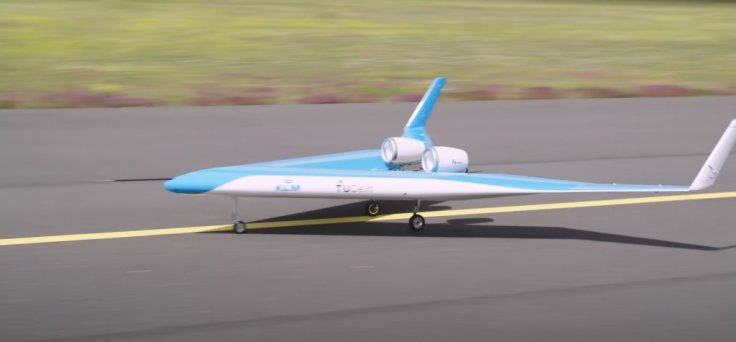For the first time ever, engineers have carried out the uncrewed test flight of an aircraft named Flying-V. Interestingly, this flight is designed in the shape of the alphabet 'V', and passengers will be seated inside its wings.
The entire aeronautical industry has long been awaiting the test results of Flying-V as this aircraft, due to its unusual shape, is expected to offer 20 percent more fuel efficiency than traditionally designed flights.

Scale Model Testing
It should be noted that researchers have not carried out the test of the original Flying-V that will carry passengers on its wings, instead, they have successfully completed the testing of this flight's scale model. According to industry experts, the successful completion of this test is surely a milestone achievement, as it helped engineers to know more about how well the new plane has fared during its takeoff and landing process.
Challenges Faced by Researchers
The scale model developed by scientists has a wingspan of 3.06 m (10 ft), a length of 2.76 m (9.05 ft), and a weight of 22.5 kg (50 lb). The scale model was developed by TU Delft researchers in association with Dutch airline KLM, which joined the project last year.
"One of our worries was that the aircraft might have some difficulty lifting-off since previous calculations had shown that 'rotation' could be an issue. The team optimized the scaled flight model to prevent the issue. But you need to fly to know for sure," Roelof Vos, a propulsion researcher at Delft University of Technology, told Flightglobal.com.
Vos also revealed that rough landing is another issue that is bothering researchers who are now part of this project. According to Vos, Flying-V tends to tilt back and forth while landing on the runway, and this could make passengers nauseous during the moments before landing.
Flying-V Aims to Revolutionize Aviation Industry
Flying-V craft's completely materialized form will have a cabin, cargo hold and fuel tanks integrated into its V-shaped wing structure. According to experts, the wingspan of this future airplane will be equal to that of an Airbus A350, and it will allow Flying-V to use existing airports for taking off and landing. Considering the fuel efficiency factor, Flying-V, if materialized has all the capabilities to revolutionize the entire aviation industry in the future.









